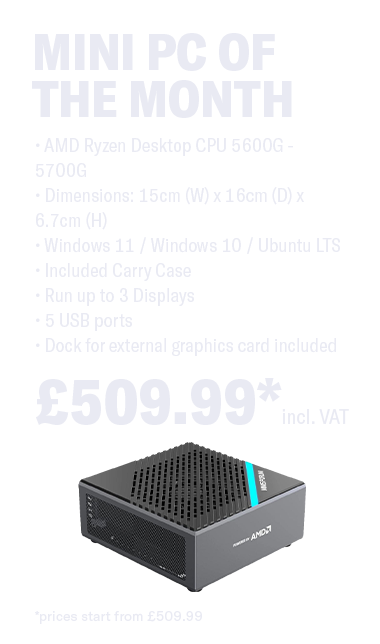
How to setup a new Gaming PC the right way
Treated yourself to a shiny new gaming PC in our Black Friday and Cyber Monday sales? Perhaps you’ve picked up one of our unbeatable Christmas gaming deals for your kids?
Setting up a new PC can be very exciting but, with so many programs and settings to navigate, it’s easy to feel overwhelmed.
The good news is, though, Inside Tech are here to guide you through the process of setting up your gaming PC properly through a series of preliminary steps and checks – ensuring your computing device reaches optimal performance.
1. Inspect your gaming PC
Whether you’ve purchased a pre-built gaming PC or you’re building your own with one of our handy DIY computer kits, it’s worth checking the PC for parts that have come away from the packaging before you fire the system up.
Some manufacturers use bubble wrap, foam and polystyrene to keep the components safe and secure during transit. However, you don’t want such materials to make their way into the chassis or fans, as they could cause your system to overheat.
2. Plug everything in
After removing all the packaging from your new PC, you need to check that everything is in the right place and plug your keyboard, mouse and monitor/s in.
Once you’ve done that, you can connect your gaming PC to a reliable power source and switch it on.
If your PC has Windows software pre-installed, you’ll be asked to set your language, time zone, clock and calendar, and log in to an existing Microsoft account (if you have one) to sync all your devices.
3. Download updates
Though it could take several minutes, decent internet speeds should be able to handle updates relatively quickly.
Software updates provide new and improved functionality while addressing bugs and crashes at the same time. It can help to protect you from malware and viruses too.
Usually, as long as you’re connected to the internet, your gaming PC will inform you if there are any updates available. If it doesn’t, go to the Start menu > Settings > Windows Update.
If any updates are found, download and install them, then reboot your computer. Repeat the process until there are no more entries.
4. Check your privacy and security settings
If you don’t want to see adverts while you’re browsing the internet or waiting for your game to load, then be sure to switch them off in your privacy settings.
It’s also worth making sure that you have antivirus and antimalware software activated on your PC. And avoid clicking on email links from strangers or entering dubious websites.
5. Back everything up
Ranging from coffee spills and accidental deletions to simply forgetting to back up a file, human error is one of the biggest causes of data loss.
Backing up your gaming PC will produce copies of all your files, data and information, allowing you to recover them in case something catastrophic were to happen.
There are various options to choose from, including cloud backups which are the safest and most secure option for backing up data automatically, and external hard drives and solid-state drives which are compatible with most devices and offer a portable solution.
6. Select your preferred browser
Microsoft Edge is the default web browser for Windows PCs.
The reason why PCs come with Edge pre-installed is that so many applications (including computer games) rely on having at least one browser installed.
Whilst Edge is the primary option, nothing is stopping you from installing Chrome or any browser you wish.
Want to know more?
If you have any questions about setting up a gaming PC or you’d like to know more about the pre-built and custom models we stock on our website, you’re welcome to
contact us at any time.
Our experts have an unrivalled knowledge of the products available and will happily assist you in setting your system up safely. We can also advise you on how to make it run smoothly over the long term.
To speak to us directly, give us a call on 0800 009 6084 or drop us an email at info@inside-tech.co.uk, and we’ll get back to you as soon as possible.
